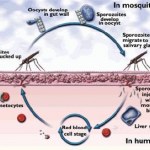Johns Hopkins
I’m not easily shocked to learn about injustice against workers. But my jaw hit the floor in fall 2013 when I read Chris Hamby’s 2013 Pulitzer Prize winning series on the lengths to which coal companies go to dispute that miners have coal-dust related lung disease (a.k.a. black lung.) My jaw hit the floor a second time when Hamby (then with the Center for Public Integrity) exposed that Johns Hopkins University and its employee Dr. Paul Wheeler where star players on the coal operators’ teams.
The families of Steve Day, 67, and Junior McCoy Barr, 79, have now filed a lawsuit against the…
The ‘Nifty Fifty (times 4)’, a program of Science Spark, presented by InfoComm International, are a group of 200 noted science and engineering professionals who will fan out across the Washington, D.C. area in the 2014-2015 school year to speak about their work and careers at various middle and high schools.
Meet Nifty Fifty Speaker Dr. Jordan Green
As a researcher, Jordan Green, Ph.D. is on the front lines of creating innovative technologies and therapeutics that can directly benefit human health.
Specifically, this involves employing techniques in cellular engineering…
Life cycle of the malaria parasite. Image Source: Stanford University
Researchers, Jacobs-Lorena et al., at the Johns Hopkins Bloomberg School of Public Health have altered a harmless bacteria (Pantoea agglomerans) naturally found in the midgut of mosquitos to fight malaria by producing and releasing proteins that are toxic to malaria but harmless to mosquitos or humans. Since the gut is where the malaria parasite reproduces, this is the optimal location to put an end to it. The engineered bacteria were indeed successful at reducing the number of malaria oocysts by 98% in mosquitos with the…
On Friday, I wrote a post about the 20th anniversary of my PhD dissertation defense and my reverence for Henrietta Lacks, the woman whose cervical cancer gave rise to the first immortalized human cell line and the primary system for my work. I also alluded to The Immortal Life of Henrietta Lacks, the upcoming book by Rebecca Skloot that is already garnering extensive pre-release praise.
I was, as readers have come to expect, quite a bit sentimental and reflective, with a call that we all do our part to somehow acknowledge those patients whose tissues make it possible for us scientists to do…
The Johns Hopkins press release states:
Data Collection
An examination was conducted of all the original data collection forms, numbering over 1,800 forms, which included review by a translator. The original forms have the appearance of authenticity in variation of handwriting, language and manner of completion. The information contained on the forms was validated against the two numerical databases used in the study analyses. These numerical databases have been available to outside researchers and provided to them upon request since April 2007.
Some minor, ordinary errors in transcription…
I asked Mary Losch (chair of AAPOR's Standards Committee) to comment on my previous post
I have read your entry and would note that the links you provided did
not supply the questionnaire items but rather a simple template (as
noted in the heading). The Johns Hopkins report provides only
superficial information about methods and significantly more detail
would be needed to determine the scientific integrity of those methods
-- hence our formal request to Dr. Burnham. The Hopkins website
refers to data release but, in fact, no data were provided in response
to our formal requests.…


